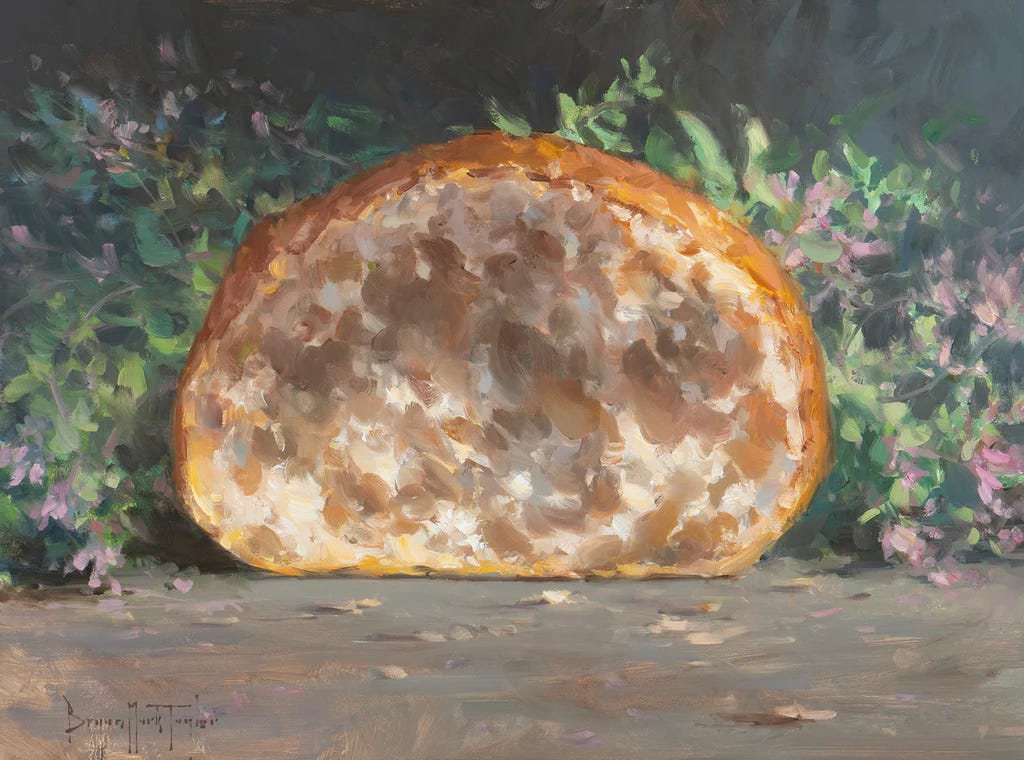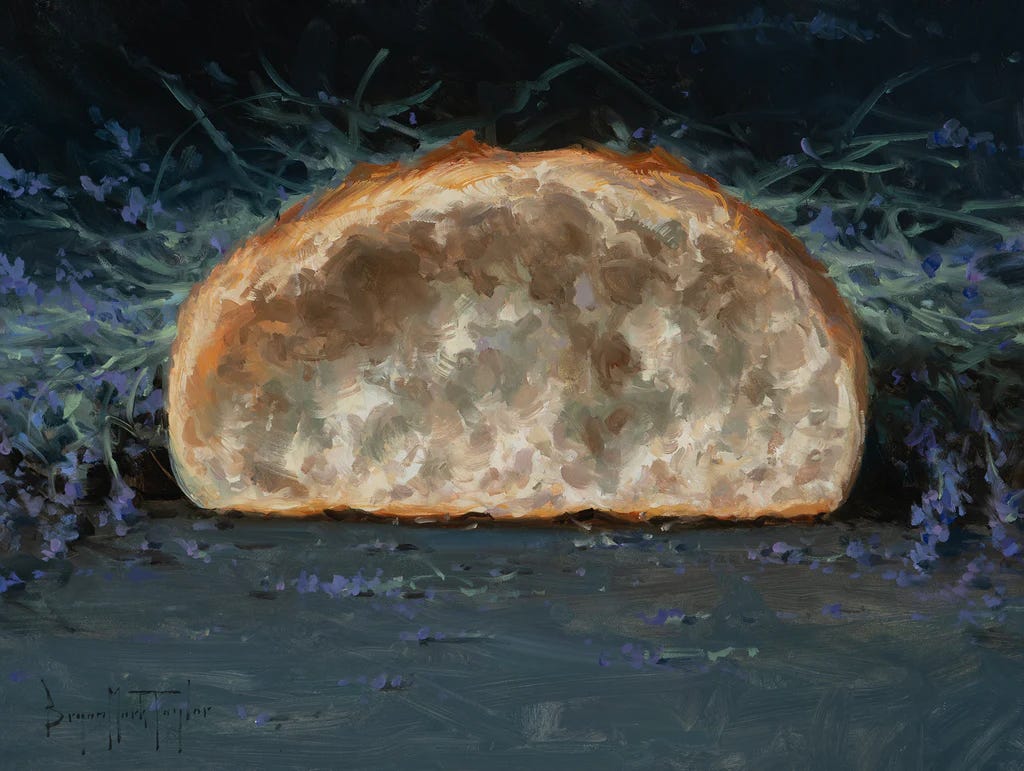One of the hallmarks of President Russell M. Nelson's prophetic ministry has been his emphasis on encouraging members to walk “the covenant path.” That phrase was first used by Elaine Cannon in the 1990s and then first articulated in general conference by President Elaine S. Dalton in 2007. Though President Nelson himself has used the term sparingly (in published addresses, at least), during the 2010s, the phrase was used 106 times in general conferences. And already in the 2020s, it has been used in general conferences 216 times. The increased emphasis on covenants is clear and striking.
Still, I fear this is a phrase we are prone to treat too superficially. My experience has been that we often assume that the only point of covenants is that they be made. That is, we often behave as if the point of baptism is baptism and the point of endowment is that and that alone. I think it is fruitful to push back on this idea by recognizing this: while making covenants may matter because of immediate metaphysical consequences of the involved ordinances, and while seeing the progression of ordinances and covenants as a path can help add direction and linearity to our spiritual lives, covenants adopt their full meaning as they bind us together in community and help us to become like Jesus Christ.
There may be some metaphysical importance to the reception of the ordinance itself. Such is suggested by our insistence on performing vicarious ordinances on behalf of ancestors who have died. Daily life is filled with examples of things that must pass through certain carefully prescribed physical experiences to bring about a desired result. For example, even after flour has been mixed with salt and water and leavened with yeast, in order for dough to become a loaf with a characteristic crackling and golden crust and open, airy internal texture, it must be subjected to certain conditions involving high heat and steam in an enclosed space for a prescribed amount of time.
In some way I do not claim to understand, it’s possible that a similarly precise set of circumstances may be necessary as part of an ordinance to ensure that a person's soul undergoes a necessary, metaphysical, eternal transformation.
Even if this is true, however, I am suspicious of the idea that this is all that is going on when we receive ordinances and make covenants. It seems to me that there must be more to this particular spiritual story. In October of the year 2000, then-Elder Dallin H. Oaks said,
From such teachings we conclude that the Final Judgment is not an evaluation of a sum total of good and evil acts—what we have done. It is an acknowledgement of the final effect of our acts and thoughts—what we have become. It is not enough for anyone just to go through the motions. The commandments, ordinances, and covenants of the gospel are not a list of deposits required to be made in some heavenly account. The gospel of Jesus Christ is a plan that shows us how to become what our Heavenly Father desires us to become.
I consider this to be one of the most important paragraphs from the last quarter century of general conference addresses. I reflected on this quote during recent celebrations of the lives of four beloved older friends from the stake where I live. The first came about six months ago at the funeral of a beloved woman who had served as one of the matriarchs of our stake for many years. The second came just a few weeks ago when I attended the 70th wedding anniversary celebration of a couple who, together, have comprised one of the tent poles of the ward where I have lived for several decades. To those who knew them well, it was evident that the people at the center of these events had fashioned their entire lives around the covenants they had made as members of the Church of Jesus Christ of Latter-day Saints.
They had spent decades holding various callings in their respective congregations. They had opened their homes in formal and informal ways both to ward members and to their wider communities. All four had worn out their lives enmeshed in the beauty of their respective religious and civic communities. The fruits of what they had done in those circumstances were evident to everyone celebrating their lives. Indeed, I was deeply touched to hear that, for example, one of the couples built a house behind their home which they then ceaselessly let out, often without requesting payment, to anyone who needed a place to stay, for the short or the long term, over the course of decades. Similarly, the other couple, well into their sixties, became aware of a young man in their ward whose parents had become largely unavailable. And so, after a great deal of discussion, the couple reached out to the parents and arranged to adopt the boy. Speaking at the service, that young boy—now a grown man with children of his own—recounted with tears in his eyes that, despite experiencing the regular chafing against his adopted parents that comes as part of adolescence, he nonetheless recognized, even as he was growing up, that he was and always would be loved reliably and unalterably in his new home, and that affection was something he would never need to earn.
All of this has led me to a preliminary conclusion: whatever metaphysical purpose covenants may serve, I believe that their most important purpose while we are on earth is both educative and transformative. Covenants do not merely constitute a one-time ritual—as important as those ceremonies may be. Rather, covenants help to teach us a particular way of relating to time, God, others, resources, and life itself. Covenants are the metaphysical catalyst that helps to spark changes to what Tocqueville called the “habits of the heart.” They help us to alter the virtually invisible, nearly unrecognized, acts that pass by moment to moment and day to day, creating hardly a stir in the water, but which add up over years and decades into the substance of our lives and the effect our actions have on the world and those around us. To live a covenant life is to promise to spend your life seeking to discover how God would have you engage with your fellow humans and the world around you.
In this way, covenants matter not primarily because they constitute a checklist that helps us prepare for the afterlife, nor primarily because they are required stops on the road that allow us to return to heaven, but, instead, because they transform us, not just individually but also collectively. It is not for nothing that Elder Gong has spoken of church members as creating communities by dint of covenants. This is true of sealing covenants, in particular, which bind members of a family to each other, but more broadly, covenants act like covalent bonds that weld together the matrix of atoms that constitute a solid element—they are the heavenly glue that can root us into mutually loving relationships with our fellow humans, and that can teach us that the circle of our concern must expand forever outward, eventually encompassing all those whom we have the opportunity to bless or heal.
These hypotheses are preliminary, and chiefly of value for the questions they raise. Indeed, this realization merely sets the theological stage for a more comprehensive understanding of what it means to live a covenant life. Within this framework, we can begin to look at individual ordinances and covenants and to examine the ways these rituals and their associated promises are meant to shape our lives.
Accordingly, I am excited to announce that over the next 12 months or so I will be joined by a host of authors who will help me to explore the contours of a covenant life within the theology of the Church of Jesus Christ of Latter-day Saints. Currently we hope to hear from JB Haws, Rosalynde Welch, Dierdre Green, Patrick Mason, August Burton, Sarah Sabey, Travis Hicks, Peter Mugmancuro, Jeremiah Scanlan, and many others. My hope is that together we can add depth to our collective religious understanding of what it means to allow our covenants to shape us into individuals who can be bound together into a beloved community, a covenant people.
Tyler Johnson is a medical oncologist and associate editor at Wayfare. To receive each new Tyler Johnson column by email, first subscribe to Wayfare and then click here to manage your subscription and turn on notifications for On the Road to Jericho.
Art by Bryan Mark Taylor. Bread and Oregano and Lavender Bread. @bryanmarktaylor





Thank you so much. When I first heard President Oaks’ talk about becoming it went deep into my soul and has since influenced everything I’m trying
to become. I’m looking forward to joining you on the Road to Jericho.